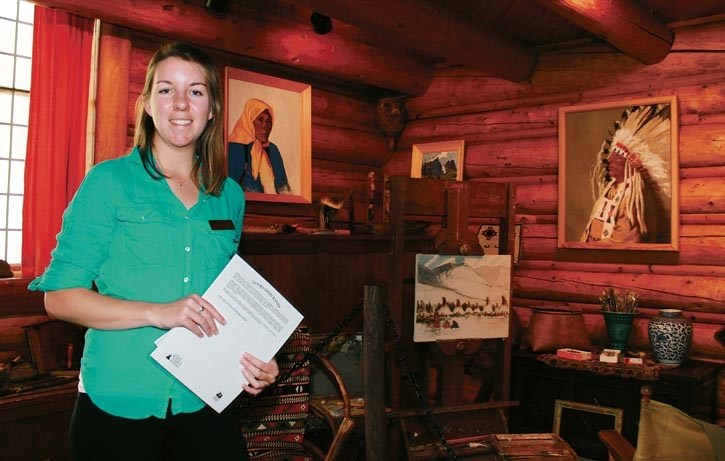The legacy of Banff’s Peter and Catharine Whyte continues.
The Whyte Museum of the Canadian Rockies has submitted an application to the Town of Banff to designate the couple’s residence on the museum’s grounds as a municipal historic resource.
Banff council has directed administration to issue a notice of intent to designate the Peter and Catharine Whyte Residence and return with a designation bylaw within 120 days of the Sept. 26 direction.
Town of Banff planners say designation intends to recognize the significance of the two-storey log cabin, protect it legally and support maintenance of important heritage elements of the building.
“We have the opportunity to recognize Peter and Catharine’s incredible contribution to Banff’s cultural community,” said Emma Abramowicz, an intern heritage planner with the Town.
“It’s also a chance to highlight an architecturally significant and actually pretty rare historical residence in the townsite.”
Built in 1930-31 on the east bank of the Bow River, the cabin was designed as a live-in studio for Peter and Catharine by local architect Earl Spencer, who is also the architect of Skoki Ski Lodge, which is designated a national historic site.
The Whytes -– artists, photographers, outdoor enthusiasts, travellers, philanthropists and cultural workers – stayed in their home until their deaths. Peter died in in 1966 and Catharine 13 years later.
While it underwent several additions and alterations to meet Peter and Catharine’s changing needs over the course of their lives, Abramowicz said the original 1930s residence reflects design and craftsmanship deserving of municipal recognition and preservation.
She said the cabin, constructed with logs from the Morley Reserve and local Rundle stone, is a high-quality representation of wooded western mountain folk architecture and simple approach to design.
“Interior details, including the log walls, the carved window frames and doorframes, the wooden staircase and the Rundle stone fireplace and chimney, demonstrate a high degree of craftsmanship,” she said.
Designation of the Whyte Residence would be registered on title, meaning any owners would be subject to constraints regarding redevelopment or any alterations affecting important heritage aspects of the building.
“The house cannot be demolished or removed without council’s approval,” said Abramowicz.
“Any application to alter the numerous character-defining elements would require council to approve an amendment to the designation bylaw.”
Under Banff’s heritage resource policy, the Whyte Museum would be eligible for a municipal matching grant of up to $50,000.
Abramowicz said the Whyte Museum is not seeking financial compensation to help with restoration at this time, given the building does not currently require repairs.
“The museum is pursuing designation primarily to commemorate the building and to establish eligibility for provincial funding at a future date,” she said.




